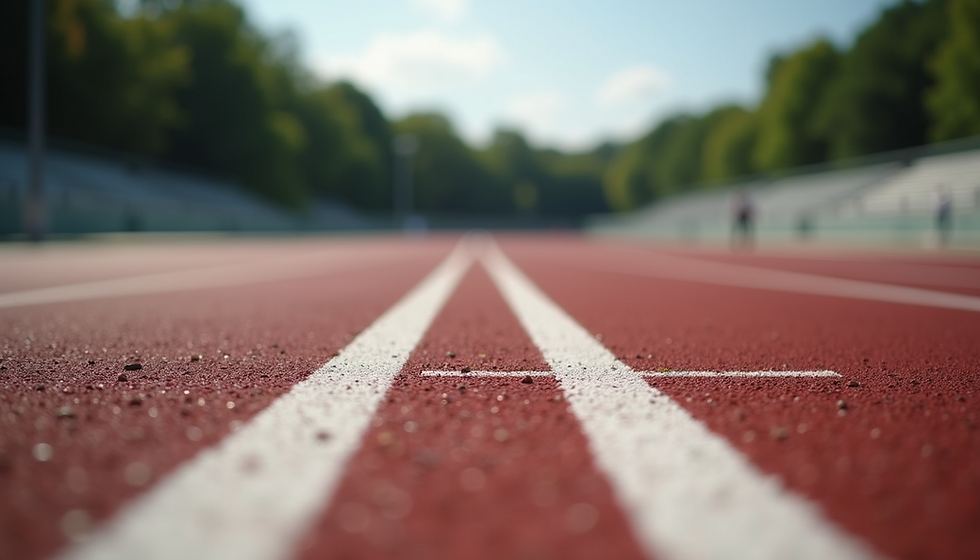Understanding the Foundations of Optimal Physical Performance
- kennysimpson1
- Jun 13
- 4 min read
Optimal physical performance is a blend of various factors, including strength, endurance, flexibility, and mental focus. Whether you’re an athlete aiming to break records or someone just trying to maintain a healthy lifestyle, understanding these foundations is key. By focusing on specific elements of physical performance, you can elevate your fitness game to new heights.
The Components of Physical Performance
Physical performance can be broken down into several critical components. These include strength, endurance, speed, agility, and flexibility. Each plays a crucial role in how well your body functions during physical activities.
Strength
Strength is essential for nearly all sports and physical pursuits. It allows you to lift heavy objects, sprint faster, or perform complex movements without injury. A strong core is particularly important as it stabilises the body and enables you to carry out various tasks efficiently.
According to the American College of Sports Medicine, strength training should be performed at least twice a week. For best results, target all major muscle groups, including legs, hips, back, abdomen, chest, shoulders, and arms.

Endurance
Endurance is the ability to sustain prolonged physical activity. It can be aerobic, involving the heart and lungs, or anaerobic, focusing on short bursts of intense effort. Aerobic endurance activities include running, swimming, and cycling, while anaerobic endurance includes sprinting or heavy lifting.
Research indicates that a balanced endurance training program should focus on both types of activities. Incorporating long-distance running sessions on weekends while including high-intensity interval training (HIIT) during the week can optimise your overall endurance.

Speed and Agility
Speed refers to how fast you can move, while agility is your ability to change direction quickly in response to a stimulus. Both are critical in sports like football, rugby, or tennis. Enhancing speed and agility requires specific drills and exercises.
Focusing on plyometric training, which includes jump training, can significantly improve both these attributes. For example, box jumps, lateral hops, and shuttle runs are effective exercises that can develop explosive power and enhance your quickness on the field.

Flexibility and Mobility
Flexibility allows for a greater range of motion in the joints, which is essential for performing exercises effectively and safely. Mobility work, which focuses more on moving through full ranges of motion without compensatory movements, is equally important. Regular stretching routines or yoga can significantly enhance both flexibility and mobility.
The National Academy of Sports Medicine recommends that you always include dynamic stretching as part of your warm-up and static stretching as part of your cool-down routine. This combination ensures optimal performance and reduces the risk of injury.
Nutrition: Fueling Performance
The food we consume plays a pivotal role in optimising physical performance. Quality nutrition helps repair muscles, improves endurance, and supports overall health. Focus on a balanced diet that includes:
Carbohydrates for energy
Proteins for muscle repair
Fats for sustained energy
Hydration is equally crucial. Dehydration can lead to performance declines, muscle cramps, and fatigue, so drink ample fluids throughout the day. Aim for at least 8-10 cups of water daily, more if you are engaging in intense activity.
The Role of Mental Health
While physical attributes are essential, mental health cannot be overlooked. Mental toughness, focus, and resilience can often be the difference between winning and losing. Techniques such as visualisation, meditation, and positive self-talk are effective methods for enhancing mental performance.
Research suggests that athletes who engage in mental training see improvements not just in performance, but also in recovery and well-being. It allows for better management of pressure and stress, which are common in any competitive environment.
Putting it All Together
To reach your full athletic potential, it’s essential to integrate all the discussed components into a cohesive training plan. Here are some actionable steps:
Create a Balanced Training Schedule: Incorporate strength, endurance, speed, and flexibility training throughout the week.
Fuel Your Body Properly: Prioritise a nutritious diet and stay hydrated.
Include Recovery Time: Allow muscles time to recover with rest days or active recovery sessions.
Enhance Mental Fortitude: Regularly practice mental performance techniques to enhance focus and resilience.
Seek Professional Guidance: If you are unsure where to start, seeking professional help can guide you toward developing an appropriate training program. You can find services for achieving elite strength and performance by consulting with trainers or sports coaches.
By continuously monitoring your progress and adapting your routine, you'll be well on your way to achieving optimal physical performance. Stay disciplined and focused, and the results will follow.
Making Progress Sustainable
Achieving optimal physical performance is not a one-time event; it’s a lifelong journey. Setting realistic short-term and long-term goals is crucial. Tracking your progress using apps or journals can help maintain your commitment.
Embrace Challenges
Don’t shy away from challenges; they are opportunities for growth. Whether it’s training for a race, lifting heavier weights, or mastering a new skill, embracing difficult tasks can lead to significant improvements.
Celebrate Small Victories
Recognising and celebrating small victories along the way can keep you motivated. Whether it’s hitting a personal record or simply feeling fitter than before, acknowledging these steps reinforces positive behaviours.
Stay Educated
The field of sports science is ever-evolving. Keeping yourself updated on the latest trends, techniques, and strategies can provide you with fresh insights into your training regimen.
Optimal physical performance is attainable through understanding and addressing various factors, from strength and endurance to mental resilience. With the right approach, combined with dedication and a passion for improvement, you can reach new heights in your physical journey.




Opmerkingen